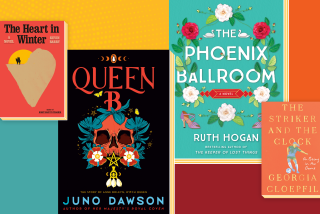‘The Complete Fairy Tales’ by Charles Perrault
- Share via
The Complete Fairy Tales
Charles Perrault
Translated from the French
by Christopher Betts
Oxford University Press: 256 pp., $29.95
There’s no reliable way to score the game, but it’s at least arguable that the European fairy tale has been the source for more popular entertainments than any other narrative tradition -- more than Greek tragedy, the Bible, the Arabian Nights, even the plays of Shakespeare. The enchanted world has inspired works as various as Rossini’s Cinderella opera (“La Cenerentola”) and Tchaikovsky’s “Sleeping Beauty,” Jerry Lewis’ “Cinderfella” and Stephen Sondheim’s “Into the Woods.” The Disney animated features, which soften the terror and boost the romance, have had a profound influence in shaping (some have said warping) the minds of children worldwide.
And where the storytellers go, critics are right behind them, Rumpelstiltskins spinning ingenious interpretations out of every theoretical straw that floats by: Freudian, Jungian, Marxist, Christian, feminist, postmodernist -- you name it.
Most of the classic tales were familiar to European mothers and grandmothers centuries before the earliest written versions in Italian, by the fabulists Gianfrancesco Straparola (published 1550) and Giambattista Basile (1636).
Yet the collection that would have the widest and most lasting impact was that by a French courtier named Charles Perrault, published in 1697, that established the brief, moralistic genre later exploited by the Brothers Grimm and Hans Christian Andersen.
Perrault was an iconoclast, a rebel against the tyranny of classical education in the 17th century, who set out to prove that myths based on European folk tales could have as enduring and profound an appeal as the stories of the Greeks and Romans. A new translation of his little book, by Christopher Betts, proves him triumphantly right about that, if any proof were needed.
Parents who read fairy tales to their children know how terrifying they are. Most fairy tales have a happy ending, but it usually comes only after one or more characters have died a horrible death or spent a long time in durance vile. People who haven’t read them since they were children themselves will scarcely believe that such shocking, gruesome stories are permitted in the hands of the young: Fathers who want to marry their daughters, ogres that dine on little children and a serial killer who murders his brides and locks up their corpses in a secret chamber are standard fare.
And that’s exactly why the appeal of fairy tales has never diminished. Children are thrill addicts who relish imaginary gore -- and have no interest in theories about why they do so. Only a child can hear the story of “Little Red Riding-Hood” and see it as a straightforward, “what happens next” narrative. We didn’t need Freud to tell us that there were powerful sexual currents in a story about a little girl who ends up in bed with a cross-dressing wolf, who amazes her with the prodigious size of various parts of his anatomy.
The most influential of modern fairy-tale theorists was Bruno Bettelheim, who propounded the thesis in “The Uses of Enchantment” (1976) that fairy tales are fantastic psychodramas that enact the real fears of children and end with the reassurance that all will be well in the end, when they grow up. Most American children slay their demons and satisfy their appetite for righteous mayhem with cartoons and video games, but in Perrault’s day, European children had direct experience with the horrors portrayed in fairy tales. In the reign of Louis XIV, France was ravaged by famines; thus the story “Hop o’ My Thumb,” in which the parents abandon their little sons to die in the forest because there isn’t enough food for all, wasn’t a bizarre, monstrous fantasy but a plausible reality.
Unlike the other great narrative traditions, fairy tales generally have been treated as anthropological phenomena more than as literature. There’s no such thing as a definitive text of the major stories; the books read by most children are modern retellings, frequently bowdlerized to protect the sensibilities of the parents. Betts’ integral, authoritative translation of Perrault’s “Histoires ou Contes,” which renders the prose tales in lucid, polished style and (for the first time, Betts writes in his introduction) the poetry in galloping rhyming verse, captures the full measure of the tales’ suspenseful power. No matter how many times we’ve heard the stories, we still long for Cinderella’s wicked stepsisters’ comeuppance and delight in Puss in Boots’ ingenuity in tricking the ogre into transforming himself into a mouse so he can gobble him up.
Yet much of the charm of Perrault’s versions lies in their depiction of life during the reign of the Sun King, delightfully captured in 26 engravings by Gustave Doré and reprinted in this edition. The grandmother’s rustic hovel in “Little Red Riding-Hood” could be a set for a pastoral ballet at Versailles; Perrault’s ogres are landed gentry in grand châteaux, who serve baked children at their tea parties. This gloss of Gallic charm domesticates the savagery of the enchanted world in a way that Disney would later emulate with a sentimental, distinctly American optimism.
James is the author of several books, including “The Music of the Spheres” and “The Snake Charmer: A Life and Death in Pursuit of Knowledge.”
More to Read
The biggest entertainment stories
Get our big stories about Hollywood, film, television, music, arts, culture and more right in your inbox as soon as they publish.
You may occasionally receive promotional content from the Los Angeles Times.








